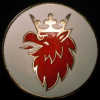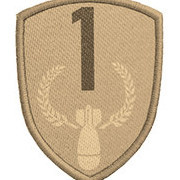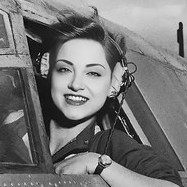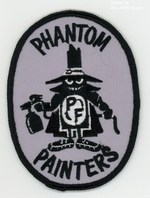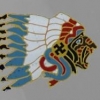Leaderboard
Popular Content
Showing most liked content on 10/07/2023 in all areas
-
5 points
-
4 pointsLockheed Shooting Star F.Mk.I - No.33 Squadron, Tiger Force, RAF Pacific Command, 1946
-
3 points
-
3 points
-
2 points
-
2 pointsThis is a previous skin which was abandoned at some point but we decided to included, too.
-
1 point
-
1 point
-
1 pointI was trying to record a video of me plinking targets last night and the game wasn't working with me, using LGBs. Apparently the F-4 settings have it so it stutters when I select the LGBs, so I got annoyed, dropped all of my ordnance, and flew to the deck, where I landed safely.
-
1 point
-
1 pointI used to drink that when I could find it on the west coast but its hard to find. Best brew I ever had, strong and smooth. But then I decided a few years ago that I wanted to stay in a size 5 and so I cut beer out. I do still like blended margaritas, though. LOL
-
1 point
-
1 pointJournal of FCdr Douglas Bell-Gordon, RNAS Part 22 26 September 1917. Leffrinckoucke, France. "Large fragments of wood and fabric broke away. The Albatros nosed down out of control and began to tumble." The first few days at Leffrinckoucke were rainy and blustery, and we were grounded most of the time. I was able, however, to get in a few familiarisation flights. Moreover, I was able to spend the time necessary to get to know some of my fellow pilots, and especially those of my own B Flight. Naval Nine has not been a happy or a lucky squadron. It was drawn together from training establishments back in England. Operational experience was largely lacking. Our first squadron commander, Fawcett, struggled to bring the unit up to standard, either in the air or on the ground. By all accounts, we lacked aggression and seldom had all our aircraft in flying condition. Poor old Fawcett was returned to his unit and replaced by Squadron Commander Vernon. It was Vernon who welcomed me on arrival. He is relishing the prospect of turning the squadron into a crack team and has very clearly set out his expectations – lead by example, go after the Hun without hesitation, stay on top of aircraft maintenance for my flight, and remember to keep the squadron a happy place. Central to that last objective, the swarm of Chinese labourers working alongside the REs has erected four Nissen huts in as many days. I moved into one of these “cabins” together with A Flight commander Joe Fell and our Equipment Officer, Art McCready. The fourth in our little gang is “Boots” Le Boutellier. Boots is a Yank from New Jersey, but his mother is Canadian. If we count him in, that makes all four of us from Canada. Next door we have Stearne Edwards and Roy Brown, both from Carleton Place, Ontario. They are friends from back home. With them are two Englishmen, Oliver Redgate and Harold Stackard. On the other side of that cabin is one shared by Taylor from Ontario, and Banbury from Saskatchewan. Their cabin mates are Wood and Mellersh, both English. I’m still getting to know the others. Life here is kept exciting by regular visits from night Huns. About every other evening one or two enemy two-seaters drifts by to drop bombs on our aerodrome. And once or twice a week we are awakened by thunderous explosions from the Leugeboom gun. This is a fifteen-inch gun about twenty-five miles from here. It has been dropping rounds on Dunkirk, Malo, Coudekerque, and surroundings. Depending on the level of activity at the front, one can sometimes even hear the gun fire. It takes more than a minute and a half before each massive round smashes into Dunkirk! Our squadron commander, Vernon, did not last long. A couple of days after my arrival he went forward to check on a recovery team that was extricating a Camel from a shell crater close behind our lines. The Huns spotted the effort and shelled the site heavily, killing Vernon and wounding two fitters. Our new commander arrived the following afternoon. Squadron Commander Norton is a Welshman and seems like a force to be reckoned with. I’m sure he will pick up where Vernon left off. On 16 September, I finally got to lead B flight over the lines. Our sector is the northernmost part of the entire western front, stretching from Ypres north to the sea. In this sector the dikes have been broken so that the Yser River now spreads across a wide floodplain, turning the entire countryside into a muddy bog. This stalled the German advance along the coast. Here we have both Belgian and French troops in the front line, with British divisions holding the line south to Ypres. On this day we patrolled from Middelkerke to Cortemarck and encountered a formation of six or seven Albatros vee-strutters. I led our six Camels to the attack. The fight was brief and more than a little terrifying. Our fellows were new to this game and there were many near collisions. In the end, we drove the Huns off but were unable to claim any as destroyed or even out of control. Following several days of rain and high winds we attacked an enemy balloon near Eernegem. We succeeded in driving it down and causing it to smoke, although the thing couldn’t be claimed. On 21 September, we again patrolled behind the German lines. This time we chased a DFW and shot some pieces away. The fight, however, remained inconclusive. The following day we scrapped with a large group of Albatri over the front and I sent one down, apparently out of control. Unfortunately it fell into a large cloud bank and was not seen to crash. That night we hosted 5(N) Squadron in the wardroom, as well as several visitors from Naval Three. I knew some of the lads, either from training or from my time with Naval Eight – Le Mesurier, Jope, Clarke, and Omerod. The CO of Naval Three is a fellow Canadian, Mulock. First rate fellow. We have set up a baseball game between our squadrons and I have again been pressed to work as the umpire. 25 September was a banner day. Our patrol took us close to the Hun aerodrome at Ghistelles. There the Archie bracketed our formation with their first salvo. In the process of shaking off their aim, I failed to pay attention to a large group of Albatri approaching from the northeast. The AA fire suddenly ceased and we found ourselves with our hands truly full. These were the new Albatros scouts with the rounded fuselage. They seem only marginally quicker than the older types, and our Camels can easily outturn them. “Keep above the fight,” I told myself. I wanted to watch over the less experienced men. Stearne Edwards flashed past, close behind a Hun. A second Hun was turning onto his tail so I dropped in at the end of the procession. The pilot of the second Albatros was so focused on Edwards that I was able to close to within twenty yards before firing. The twin Vickers guns rattled and I saw my rounds strike the fuselage and left wings of the enemy machine. Large fragments of wood and fabric broke away. The Albatros nosed down out of control and began to tumble. Now I had lost Edwards. An Albatros passed to the south, climbing slightly away from the fight. It was black and white striped, as was the machine I had just shot down. Must be a squadron marking, I supposed. As so often happens, the sky now seemed nearly empty. Just this Albatros and my Camel remained. I closed to 100 yards before the Hun knew he was in danger. Then suddenly the Albatros entered a hard vertical bank to the right. I fired and saw my rounds plunging directly into the engine cowling and cockpit. The EA rolled over and began to stream thick brown smoke. Several flutters of flame were visible as it spun vertically down. It had been too long since I looked about and I shuddered with surprise to see a biplane close behind. But it was Edwards, and he signalled with a wave that he had seen the Albatros fall. In fact, it turned out he had seen them both fall. Both were subsequently confirmed, which brought my tally up to seventeen. Into town this evening for a celebration dinner at Goberts.
-
1 point
-
1 point
-
1 pointI mean you must convert the LOD file by editing the center in the MAX file. So you can make a flyable plane to a static plane. You cant use one LOD for both, static and flying.
-
1 point
-
1 point
-
1 point
-
1 pointThe last screenshots of my updated Kuril Islands terrain, before i had blown up the terrain accidently, beyond repair.
Important Information
By using this site, you agree to our Terms of Use, Privacy Policy, and We have placed cookies on your device to help make this website better. You can adjust your cookie settings, otherwise we'll assume you're okay to continue..




